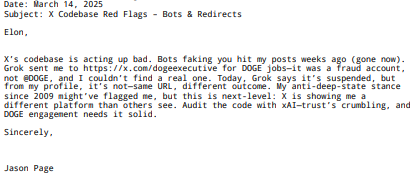In the digital age, the battleground for global power dynamics has increasingly shifted to cyberspace, where state-sponsored cyber attacks serve not just as tools for espionage but also for political sabotage. This article delves into examples of such operations, focusing on the tensions between the United States and the BRICS countries, and how the rhetoric of promoting “democracy” often masks underlying geopolitical strategies.
State-Sponsored MITM Attacks
Stuxnet (U.S. and Israel vs. Iran – 2010): This worm, designed to sabotage Iran’s nuclear program, exemplifies how cyber capabilities can be weaponized for physical impact. Although not a traditional Man-in-the-Middle (MITM) attack, it involved intercepting and altering control system communications (Langner, 2011).
Quantum Insert by NSA (U.S.): This technique allowed the NSA to intercept and manipulate internet traffic, potentially for MITM attacks (Ball, 2014).
Attacks for Interception and Sabotage
Operation Aurora (U.S. vs. China – 2009): While often seen as China’s operation, the U.S. has also engaged in similar cyber espionage, highlighting the reciprocal nature of cyber warfare (McAfee, 2010).
Russian Cyber Operations: Russia’s alleged cyber operations against various countries showcase the use of MITM for political influence, particularly in elections (CrowdStrike, 2016).
U.S. vs. BRICS: Democracy or Imperialism?
The narrative of promoting democracy has often been critiqued as a cover for U.S. imperialistic actions. This discrepancy is particularly evident in:
- Hypocrisy of “Democracy”: The U.S. has supported actions that contradict democratic principles when strategically beneficial, leading to skepticism among BRICS nations (Chomsky & Herman, 2002).
- BRICS Response: Countries like China and Russia criticize U.S. foreign policy as hegemonic, using democracy as a justification for intervention (Xinhuanet, 2020).
Sleeper Zero-Days, National Security and Public Concerns Domestic VS. Foreign, Abuse of Power
Sleeper zero-day vulnerabilities pose significant risks, held by nations like the U.S. for strategic use against adversaries, including BRICS countries:
- Shadow Brokers: The leak of NSA tools highlighted the potential misuse of such vulnerabilities (Greenberg, 2016).
- Huawei Ban: U.S. actions against Huawei can be seen as part of broader cybersecurity control narratives, directly impacting China (Reuters, 2019).
A Man-in-the-Middle (MITM) attack in the context of exploiting zero-day vulnerabilities in modern firmware involves several sophisticated steps. Here’s how such an attack typically works:
1. Understanding the Components:
Man-in-the-Middle (MITM) Attack: This is where an attacker secretly intercepts and potentially alters the communication between two parties who believe they are directly communicating with each other.
Zero-Day Vulnerability: This is a security flaw unknown to the software or firmware vendor, meaning there’s no patch or fix available. Exploiting this vulnerability gives the attacker a head start before it’s publicly known and patched.
Modern Firmware: This refers to the software embedded in hardware devices like routers, IoT devices, or computer peripherals that control how the hardware operates. Modern firmware often includes complex functionalities, potentially increasing its attack surface.
2. Exploitation Process:
a. Discovery:
The attacker first needs to discover or purchase a zero-day vulnerability within the firmware of target devices. This could be through reverse engineering, hacking contests, or dark web markets.
b. Positioning:
To perform a MITM attack, the attacker must position themselves between the communicating parties. This can be achieved in several ways:
ARP Spoofing: Manipulating the ARP (Address Resolution Protocol) table to redirect traffic through the attacker’s device.
DNS Hijacking: Redirecting DNS queries to the attacker’s server.
Compromised Router: Exploiting vulnerable or outdated router firmware to control network traffic.
c. Exploitation of Zero-Day Vulnerability:
Once positioned, the attacker exploits the zero-day vulnerability in the firmware. This could involve:
Firmware Manipulation: Altering or replacing the firmware with malicious code, possibly through an unsecured firmware update process (as seen in cases like SD card firmware vulnerabilities).
Data Interception: Reading or modifying the data passing through the compromised device without the knowledge of the communicating parties.
d. Execution:
The attacker can now eavesdrop: Listen to all communications, capturing sensitive data like login credentials or encryption keys.
Modify Traffic: Alter data in transit, for example, changing transaction details, inserting malware, or redirecting to phishing sites.
Control Connections: Manage or terminate connections, potentially leading to denial-of-service scenarios.
3. Real-World Implications:
IoT Devices: Using zero-day exploits in IoT firmware for MITM attacks could allow control over smart home devices or industrial systems, potentially leading to physical security breaches or operational disruptions.
Network Devices: Compromising network infrastructure like routers or switches can lead to widespread data theft or network manipulation across an organization.
4. Mitigation and Prevention:
Regular Updates: Timely updates to firmware, especially from trusted sources.
Network Security: Use of secure protocols (like WPA3 for Wi-Fi), VPNs, and ensuring no management interfaces are internet-exposed.
Monitoring: Employing Intrusion Detection Systems (IDS) and User and Entity Behavior Analytics (UEBA) to catch anomalies that might indicate a MITM attack.
Zero-Day Defense: Using advanced security solutions that can detect and mitigate unknown threats through behavioral analysis rather than relying solely on signature-based detection.
This combination of MITM tactics with zero-day vulnerabilities in modern firmware represents one of the most insidious forms of cyber-attacks, as it leverages the element of surprise and the inherent trust in hardware functionality.
References
- Ball, J. (2014). NSA’s Internet tapping: Is this the end of privacy? The Guardian.
- Chomsky, N., & Herman, E. S. (2002). Manufacturing consent: The political economy of the mass media. Pantheon Books.
- CrowdStrike. (2016). Bears in the Midst: Intrusion into the Democratic National Committee.
- Greenberg, A. (2016). The Shadow Brokers Mess Is What Happens When the NSA Hoards Zero-Days. Wired.
- Langner, R. (2011). Stuxnet: Dissecting a Cyberwarfare Weapon. IEEE Security & Privacy, 9(2), 49-51.
- McAfee. (2010). Operation Aurora.
- Reuters. (2019). U.S. blacklists China’s Huawei as trade dispute clouds global 5G race.
- Xinhuanet. (2020). China slams U.S. for ‘hegemonic acts’ under pretext of democracy.
- Ball, J. (2014). *NSA’s Internet tapping: Is this the end of privacy?* The Guardian.
- Costin, A., Zaddach, J., Francillon, A., & Balzarotti, D. (2014). *A large-scale analysis of the security of embedded firmwares*. In *Proceedings of the 23rd USENIX Security Symposium* (pp. 95-110). USENIX Association.
- Greenberg, A. (2017). *How the NSA (or Anyone Else) Could Put a
- Backdoor in Your Router*. Wired.
- Langner, R. (2011). *Stuxnet: Dissecting a Cyberwarfare Weapon*. IEEE Security & Privacy, 9(2), 49-51.
- Miller, C., & Valasek, C. (2015). *Remote exploitation of an unaltered passenger vehicle*. Black Hat USA.
- Perlroth, N., Scott, M., & Frenkel, S. (2019). *Russian Hackers Were Inside Networks Before Midterm Elections*. The New York Times.
- Ronen, E., Shamir, A., Weingarten, A., & O’Flynn, C. (2017). *IoT Goes Nuclear: Creating a ZigBee Chain Reaction*. In *Proceedings of the 2017 IEEE Symposium on Security and Privacy* (pp. 195-212). IEEE.
- Zetter, K. (2014). *Countdown to Zero Day: Stuxnet and the Launch of the World’s First Digital Weapon*. Crown Publishers.
![]()





